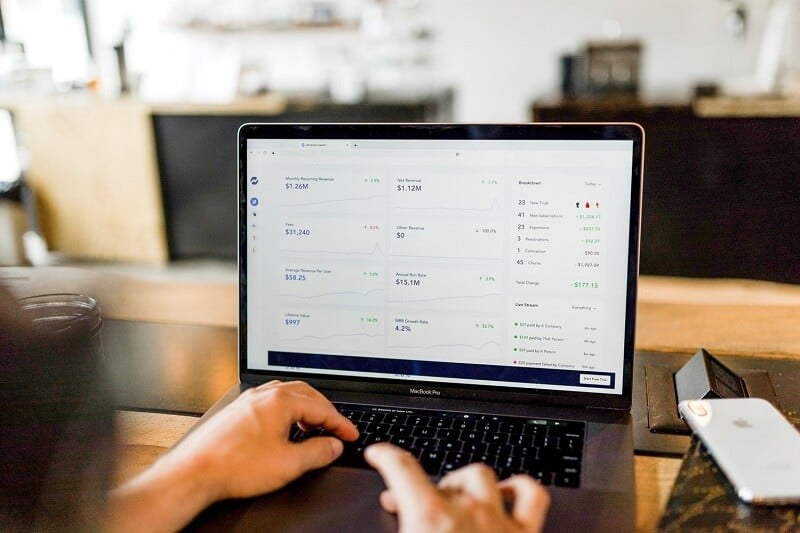
The gross margin helps investors to examine a company’s potential for profitability. But investors shouldn’t rely on it as the only metric.
Gross margin represents the companies’ net sales revenue minus the cost of goods sold or shorter COGS. Why is this so important? Gross margin is the sales revenue companies keep. To put it simply, that is the money the companies left over when they pay all cost, fixed and variable related to their production but subtracted from their net sales. Fixed and variable costs are purchasing the materials needed for production, plant overhead, labor. So, the higher gross margin means that a company retains more capital. That money company usually uses for debt payments or some other costs.
To calculate it we need to know two figures: net sales and cost of goods sold. Net sales is calculated if subtract returns, discounts, and allowances from the gross revenue.
So the formula to calculate the gross margin is expressed as
gross margin = net sales − COGS
This is is an important metric. It enables companies to fund investments during periods of growth and be profitable when the growth declines. Many factors add to a company’s capability to keep a high gross margin. That can be products that deliver high ROI, pricing discipline, etc. It reveals how much a company is able to invest in further development, sales, or marketing and consequently, can it be the winner in the market.
The importance of gross margin in investing
Every single investor would like to discover the next big player in the market and invest in the company in its early days and ride those stocks to enormous gains. For example, some of them did it in the early days of Apple, Microsoft or similar.
Though, finding these stocks is the tricky part. Early-stage growth companies don’t have obvious and constant earnings. Some investors who invested in such companies usually end up in loss. Since there is no earnings yet, what do you have to look at? Simple, look at the gross margin and cash flow. For early-stage companies, but not for them only, these two metrics are most important. Well, you have to understand one important thing. Some companies will heavily spend to develop some products or expand their business during some period. So, it might be some losses over those periods that can last even a few years. But every investor is expecting that, right? Hence, the most important for you as an investor is to determine if the company is able to be profitable after all.
For example, you are examining a fresh company in the market. It has fantastic revenue growth. Always ask yourself how capable is the management in turning sales into profits? Here is this important metric on the scene to help us. It is the best tool we have to examine a company’s potential for profitability. Use the formula above and calculate it before deciding to buy any stock. Never overlook the importance of gross margin.
A real-life example
Let’s assume a company you are estimating has $10 million in sales. The costs of purchasing materials and labor amount to $6 million. What will be its gross margin? Let’s use the formula.
$10.000.000 – $6.000.000 = $4.000.000
That is a 40% gross margin rate. This figure is important but you’ll need to estimate if a company is on the way to profitability. So, watch for increasing gross profit margins. The increasing gross profit margin will show if there is an uptrend.
Also, increasing gross margin is connected to research and development. For example, biotech and technology companies need money to invest in these sectors. Companies with increasing gross margins always invest more cash in future operations.
What does the gross margin tell investors?
The gross margin is the part of the revenue that the company retains as gross profit. For instance, when a company’s quarterly gross margin is 40%, that means it retains $0.40 from each dollar of revenue produced. You can use any currency, of course. Since COGS has been already subtracted, the rest of the fund can be used for interest fees, debts, dividends payment, etc. Gross margin is very important for companies, not for investors only. By using this tool they can compare the expense of production with revenues. For instance, a company has a problem with falling gross margin. What can management do?
They may try to cut labor costs or to find a cheaper supplier. The other solution is to increase the price of the products to increase revenue. But this isn’t always the best solution since the sales may drop due to increasing prices. Gross profit margins can be useful for investors to estimate company efficiency. Also, this measure can help investors to compare the companies with different market caps.
How gross margin influence the profitability
To explain the influence gross margin has on profitability, let’s examine an easy example. For example, two companies are the same, but their gross margins are different. They have the same revenue, distribution, operating costs, almost everything is the same. But, company ABC is generating double the operating profit of company XYZ. If we want to value these companies, we can conclude that company ABC should be valued more than twice the value of company XYZ.
But what if company XYZ has a temporary hard time making gross margin below, for example, 10%? What is this company is investing in research and development, and thus has an expense for that of about 30%? Does this make it less efficient and favorable? Maybe this company is doing something on the go-to-market side to get more customers? So, this part has to be examined also. What we want to say is that one metric isn’t good enough, you have to use several to get the full picture of the company’s performances. Even companies with low gross margins can be profitable in a long haul.
Is it important in stock picking and investment?
Some investors misunderstand the gross margin also called gross profit margin with profitability ratio operating margin.
Remember, different companies have different gross margins and that depends on the essence of business. That is the reason why you should never try to compare the gross margins of companies from different industries. Do it in the same industry. Of course, you can make comparisons for companies with different market caps.
When you are estimating the gross margin willing to pick a stock to buy, remember that the majority of the companies are following the market cycles. When the market is booming the demand is very high, while in the dropping market the demand is low. During the bull market, period companies with a high gross margin will be a favorable investment. Hence, when the bear market starts such a company will suffer more. Well, how is that possible? The company with a high gross margin tends to grow faster, its profit and EPS grow faster, and higher EPS means higher returns for shareholders. But when the bear market occurs the profit of such a company will usually fall faster.
Of course, the management has the possibility to reduce the costs and limit the operating margin decline.
Bottom line
Investors can use this metric while deciding to invest in some company but shouldn’t be relied on it as solely one. They have to use it along with other metrics to pick a stock they want to add to the portfolio. Companies with high gross margin can deliver strong returns but the other parameters should be included also. Keep in mind that some early-stage companies can be a good choice too, also if the other metrics show that.


















